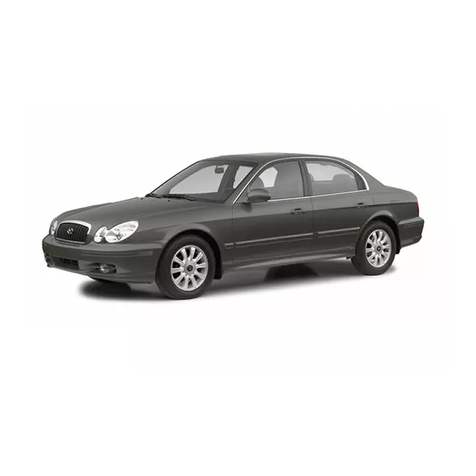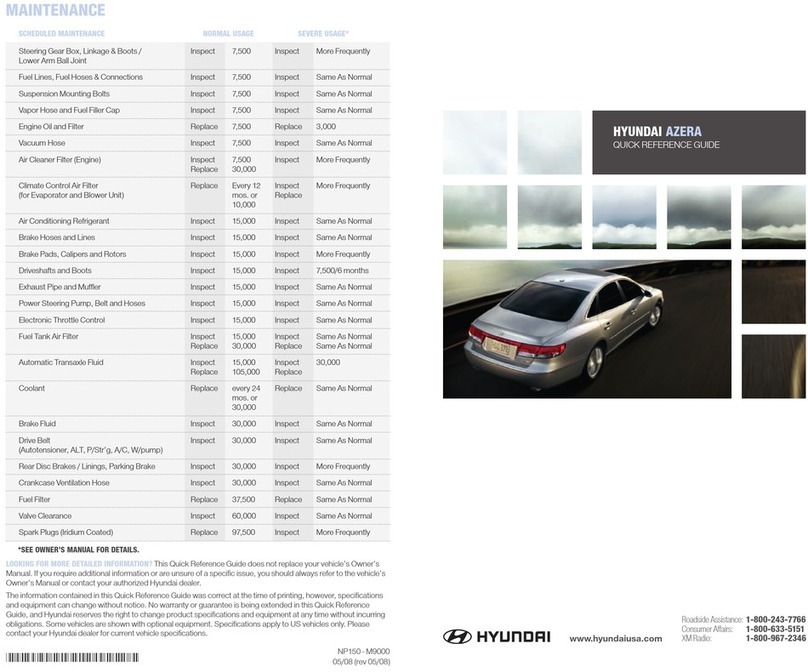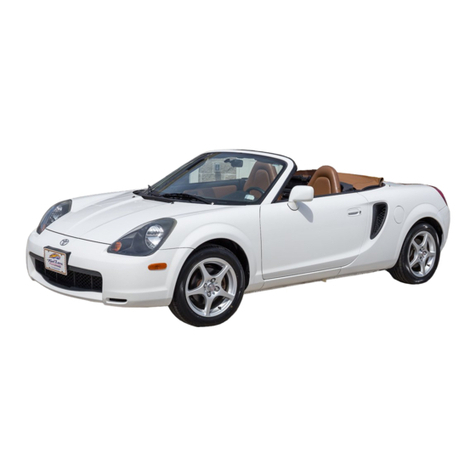G.
An improperly disposed battery can be harmful to the environment and human health.
Always confirm local regurations for battery disposal.
Handling And Storage The Battery
Battery Itself • Batteries should be stored in cool, dry (27 degrees Celsius) places and out of
direct sunlight.
• MF batteries are tightly sealed to prevent acid leakage.
However, tilting the battery to an angle of 45 degrees can cause acid to leak
through the vents on the sides. Therefore, batteries should always be stored in
their upright positions. Prevent placing any aqueous or solid (i.e. conductors)
bodies on top of the battery.
• It is extremely dangerous to use tools, such as hammers, on the battery
terminals when connecting cables to the mounted battery.
Battery on Vehicle • When storing the vehicle for long periods of time, make sure to remove the
memory fuse at junction box to prevent natural discharging.
• Also, run the engine for battery charging within 1 month if the memory fuse
wasn't removed from the start of vehicle storing.
If the memory fuse was removed, run the engine for battery charging within 3
months from the start of vehicle storing.
After reconnecting or recharging a discharged battery, the ESP OFF indicator may illuminate.
In this case, turn the handle half way to the left and right whilst the ignition switch is in the ON position.
Then, restart the engine after the ignition is OFF.
The ESP OFF indicator may turn OFF.
If the ESP OFF indicator does not turn OFF, have the system checked refering to DTC. (Refer to the BR group.)
Lift And Support Points
When heavy rear components such as suspension, fuel tank, spare tire, tailgate and trunk lid are to be removed,
place additional weight in the luggage area before hoisting. When substatial weight is removed from the rear of the
vehicle, the center of gravity may change and cam cause the vehicle to tip forward on the hoist.
• Since each tire/wheel assembly weights approximately 30lbs (14kg), placing the front wheels in the luggage
area can assist with the weight distribution.
• Use the same support points to support the vehicle on safety stands.
1. Place the lift blocks under the support points as shown in the illustration.
2. Raise the hoist a few inches (centimeters) and rock the vehicle to be sure it is firmly supported.
3. Raise the hoist to full height to inspect the lift points for secure support.



















































